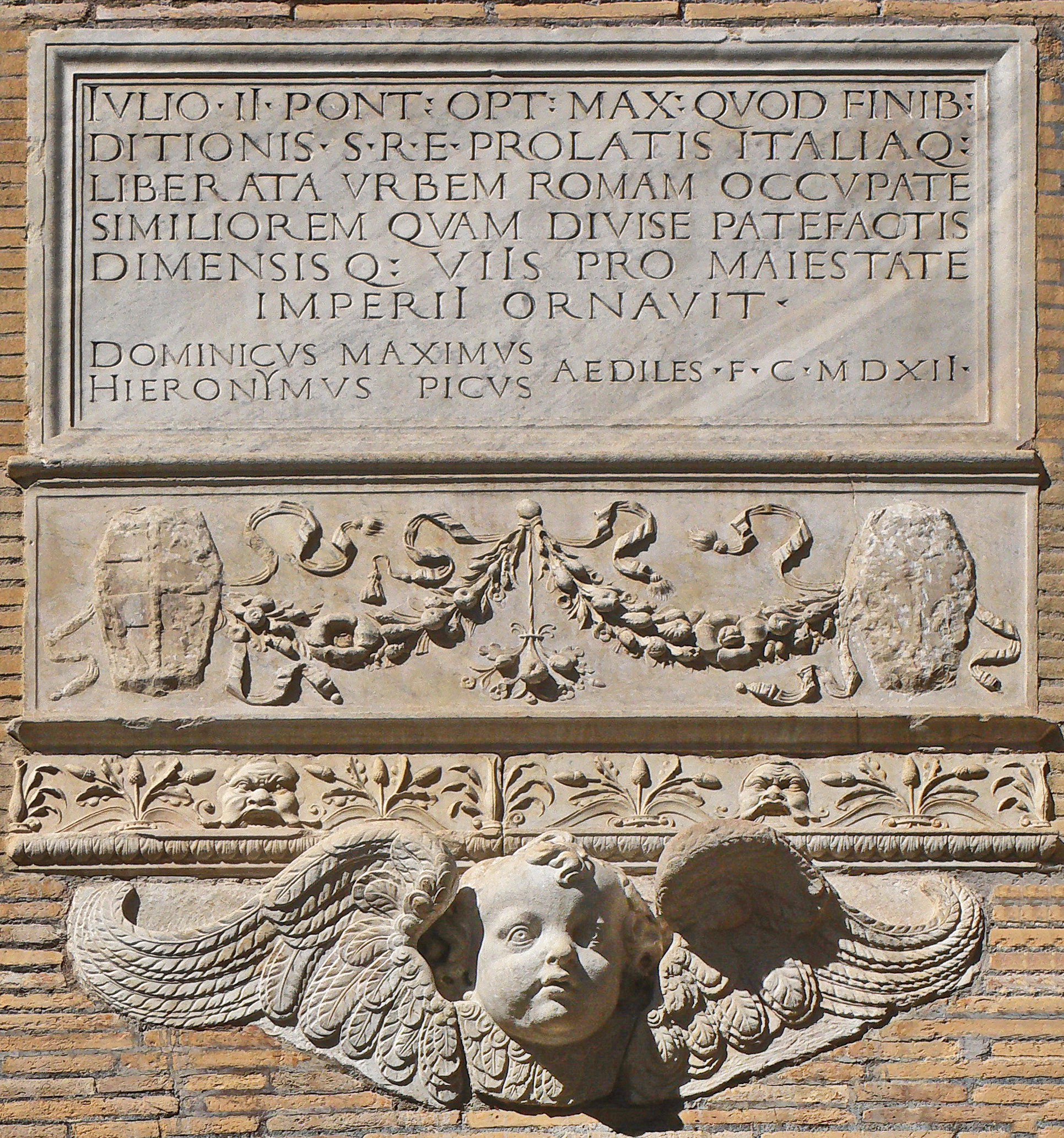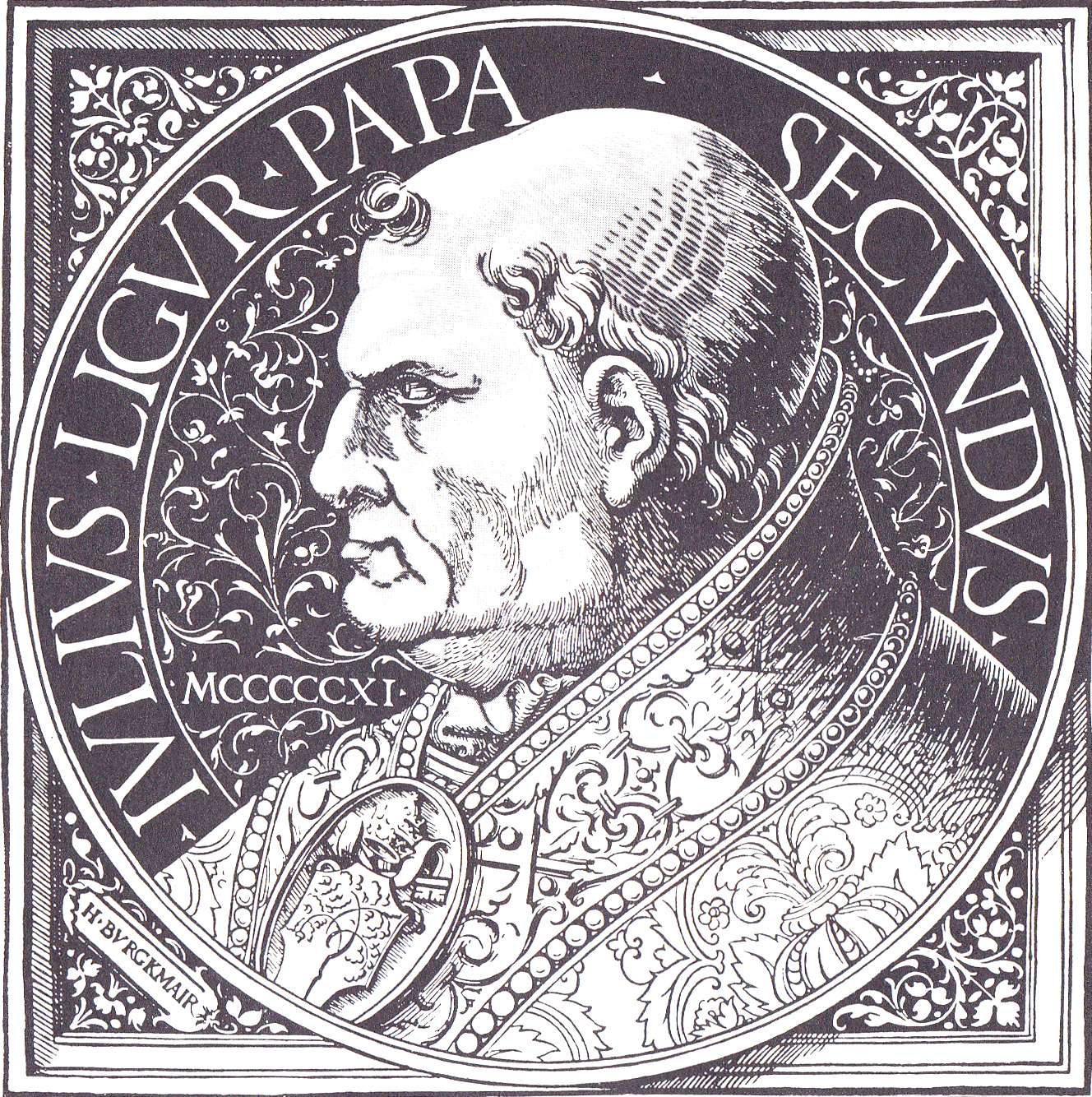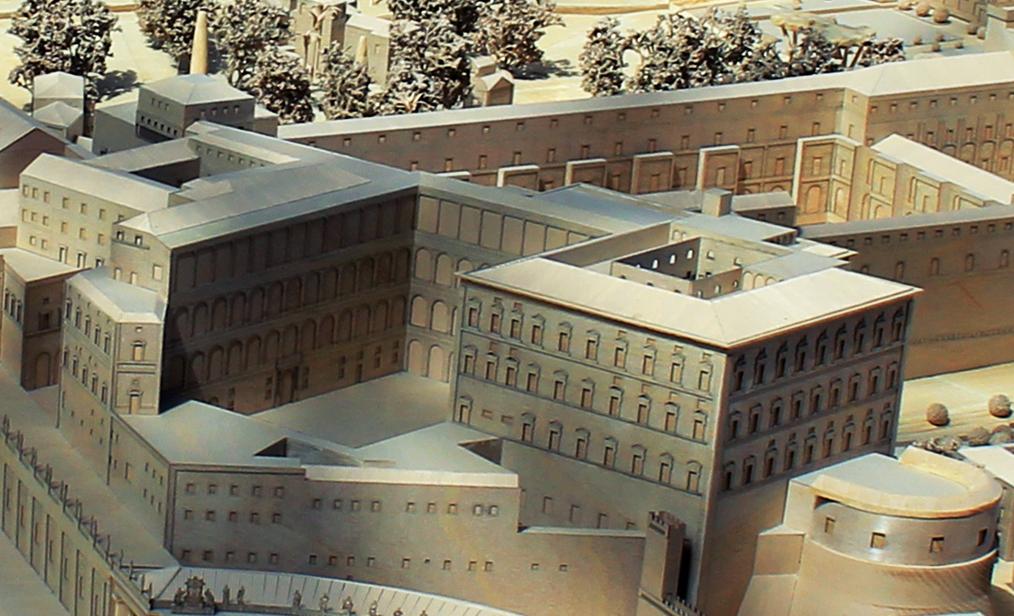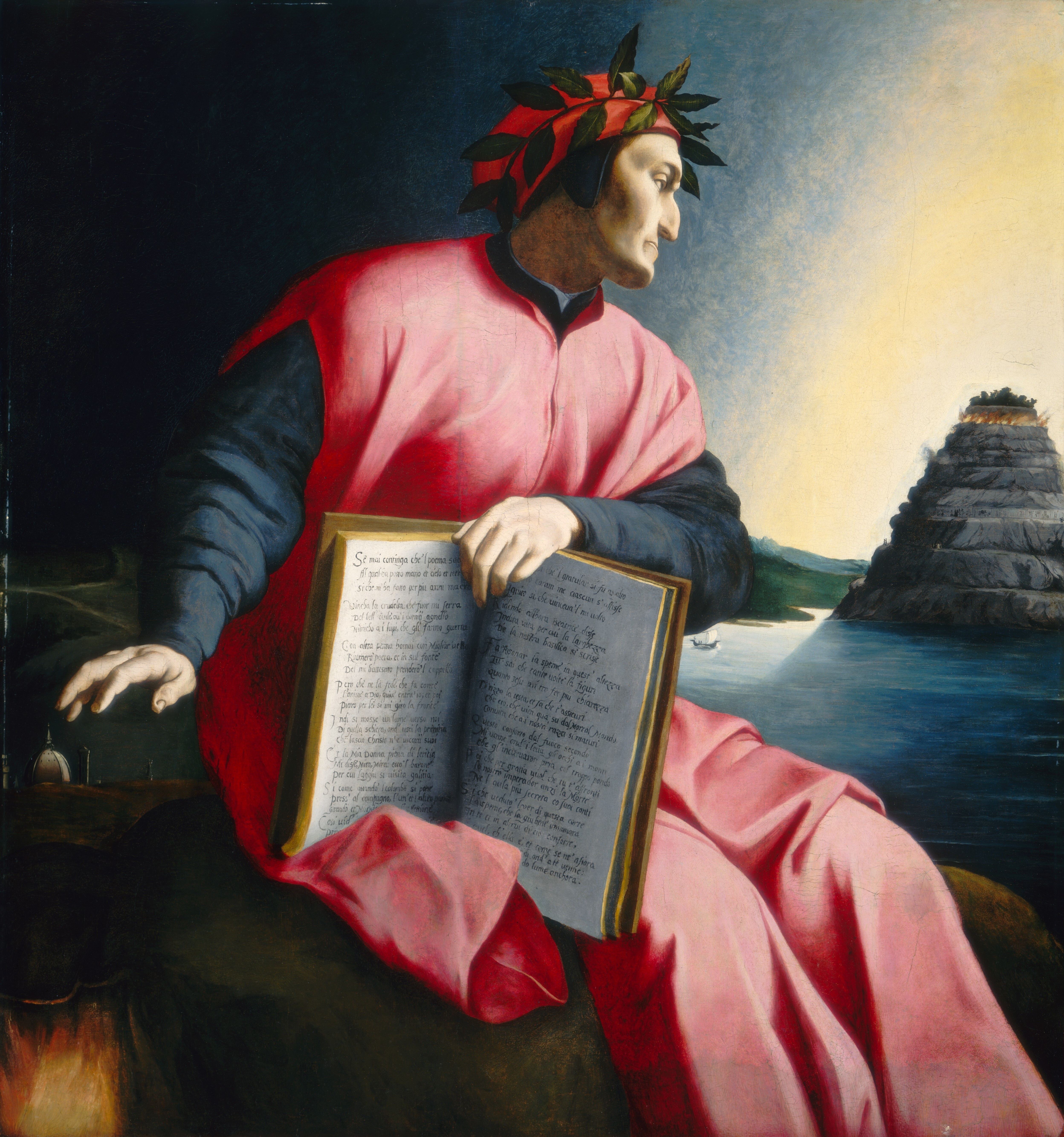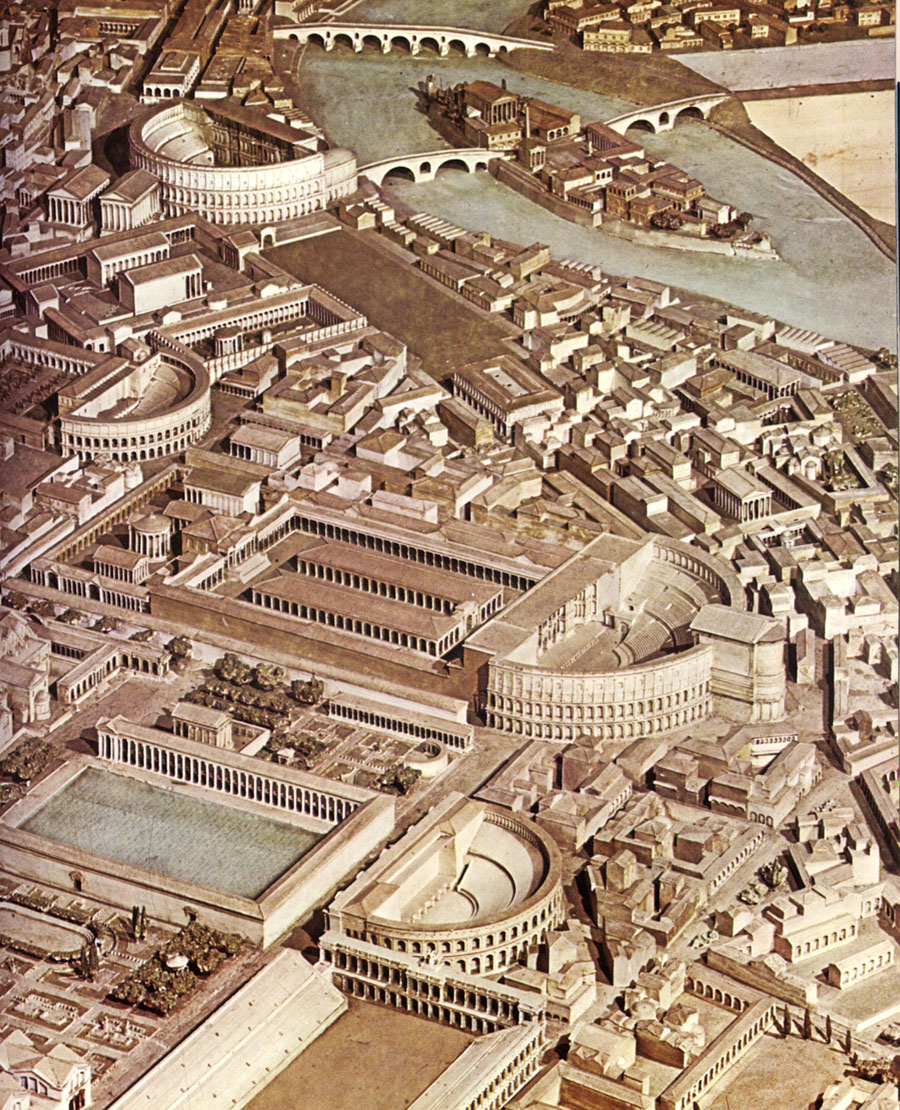|
Via Giulia
The Via Giulia is a street of historical and architectural importance in Rome, Italy, which runs along the left (east) bank of the Tiber from ''Piazza San Vincenzo Pallotti'', near Ponte Sisto, to ''Piazza dell'Oro''. It is about 1 kilometre long and connects the Regola and Ponte (rione of Rome), Ponte ''rioni of Rome, Rioni''. The road's design was commissioned in 1508 to Donato Bramante by Pope Julius II (), of the powerful della Rovere family, and was one of the first important urban planning projects in papal Rome during the Italian Renaissance, Renaissance. The road, named after its patron, had been also called () because of its importance, and () because of its layout. The project had three aims: the creation of a major roadway inserted in a new system of streets superimposed on the maze of alleys of medieval Rome; the construction of a large avenue surrounded by sumptuous buildings to testify to the renewed grandeur of the Catholic Church; and finally, the foundation ... [...More Info...] [...Related Items...] OR: [Wikipedia] [Google] [Baidu] |
Pope Julius II
Pope Julius II (; ; born Giuliano della Rovere; 5 December 144321 February 1513) was head of the Catholic Church and ruler of the Papal States from 1503 to his death, in February 1513. Nicknamed the Warrior Pope, the Battle Pope or the Fearsome Pope, it is often speculated that he had chosen his papal name not in honor of Pope Julius I but in emulation of Julius Caesar. One of the most powerful and influential popes, Julius II was a central figure of the High Renaissance and left a significant cultural and political legacy. As a result of his policies during the Italian Wars, the Papal States increased their power and centralization, and the office of the papacy continued to be crucial, diplomatically and politically, during the entirety of the 16th century in Italy and Europe. In 1506, Julius II established the Vatican Museums and initiated the rebuilding of the St. Peter's Basilica. The same year he organized the famous Swiss Guard for his personal protection and commanded a su ... [...More Info...] [...Related Items...] OR: [Wikipedia] [Google] [Baidu] |
Antonio Da Sangallo The Younger
Antonio da Sangallo the Younger (12 April 14843 August 1546), also known as Antonio Cordiani, was an Italian architect active during the Renaissance, mainly in Rome and the Papal States. One of his most popular projects that he worked on designing is St. Peter’s basilica in the Vatican City. He was also an engineer who worked on restoring several buildings. His success was greatly due to his contracts with renowned artists during his time. Sangallo died in Terni, Italy, and was buried in St. Peter’s Basilica. Early life and apprenticeship Sangallo was born Antonio Cordiani in Florence, the son of Bartolomeo Piccioni. His grandfather Francesco Giamberti was a woodworker, and his uncles Giuliano and Antonio da Sangallo were noted architects of the time. Despite his family ties, Cordiani spent his early life in poverty, resulting from the political and religious turmoil of the fifteenth century. At around age twenty, in 1503, young Cordiani followed his uncles to Rome in ... [...More Info...] [...Related Items...] OR: [Wikipedia] [Google] [Baidu] |
Divine Comedy
The ''Divine Comedy'' (, ) is an Italian narrative poetry, narrative poem by Dante Alighieri, begun and completed around 1321, shortly before the author's death. It is widely considered the pre-eminent work in Italian literature and one of the greatest works of Western literature. The poem's imaginative vision of the afterlife is representative of the medieval philosophy, medieval worldview as it existed in the Western Christianity, Western Church by the 14th century. It helped establish the Tuscan dialect, Tuscan language, in which it is written, as the standardized Italian language. It is divided into three parts: ''Inferno (Dante), Inferno'', ''Purgatorio'', and ''Paradiso (Dante), Paradiso''. The poem explores the condition of the soul following death and portrays a vision of divine justice, in which individuals receive appropriate punishment or reward based on their actions.Vallone, Aldo. "Commedia" (trans. Robin Treasure). In: Lansing (ed.), ''The Dante Encyclopedia'', ... [...More Info...] [...Related Items...] OR: [Wikipedia] [Google] [Baidu] |
Dante Alighieri
Dante Alighieri (; most likely baptized Durante di Alighiero degli Alighieri; – September 14, 1321), widely known mononymously as Dante, was an Italian Italian poetry, poet, writer, and philosopher. His ''Divine Comedy'', originally called (modern Italian: ) and later christened by Giovanni Boccaccio, is widely considered one of the most important poems of the Middle Ages and the greatest literary work in the Italian language. Dante chose to write in the vernacular, specifically, his own Tuscan dialect, at a time when much literature was still written in Latin, which was accessible only to educated readers, and many of his fellow Italian poets wrote in French or Provençal dialect, Provençal. His ' (''On Eloquence in the Vernacular'') was one of the first scholarly defenses of the vernacular. His use of the Florentine dialect for works such as ''La Vita Nuova, The New Life'' (1295) and ''Divine Comedy'' helped establish the modern-day standardized Italian language. His wo ... [...More Info...] [...Related Items...] OR: [Wikipedia] [Google] [Baidu] |
Ponte Sant'Angelo
Ponte Sant'Angelo, originally the Aelian Bridge or Pons Aelius, is a Roman bridge in Rome, Italy, completed in 134 AD by Roman Emperor Hadrian (Publius Aelius Hadrianus), to span the Tiber from the city centre to his newly constructed mausoleum, now the towering Castel Sant'Angelo. The bridge is faced with travertine marble and spans the Tiber with five arches, three of which are Roman; it was approached by means of a ramp from the river. The bridge is now solely pedestrian and provides a scenic view of Castel Sant'Angelo. It links the rioni of Ponte (which was named after the bridge itself), and Borgo, to which the bridge administratively belongs. History Starting with the early Middle Ages, the original name was forgotten: after the ruin of Nero's Bridge, pilgrims were forced to use this bridge to reach St Peter's Basilica, hence it was known also with the name of "bridge of Saint Peter" (''pons Sancti Petri''). In the sixth century, under Pope Gregory I, both the ... [...More Info...] [...Related Items...] OR: [Wikipedia] [Google] [Baidu] |
Via Dei Coronari
Via dei Coronari (known colloquially in Rome as ''I Coronari'') is a street in the historic center of Rome. The road, flanked by buildings mostly erected in the 15th and the 16th century, belongs entirely to the rione Ponte and is one of the most picturesque roads of the old city, having maintained the character of an Italian Renaissance street.Pietrangeli (1981) II, p.5 Location It is about 500m long and runs in E-W direction, between ''Largo di Tor Sanguigna'' and ''Piazza dei Coronari''. From there the ''Vicolo del Curato'' is its west extension. Behind Tor Sanguigna the straight path continues east, passing under a scenic arch into ''Via di S. Agostino'' and ''Via delle Coppelle''. The continuity between Via dei Coronari and the latter roads was destroyed in the 1910s through the opening of ''Via Zanardelli''.Pietrangeli (1981) I, p.11 Via dei Coronari forms the south border of the neighborhood of Tor di Nona: to the southwest it laps the small hill named ''Monte Giordano ... [...More Info...] [...Related Items...] OR: [Wikipedia] [Google] [Baidu] |
Via Francigena
The Via Francigena (), also known as Francisca or Romea, is an ancient road and Christian pilgrimage, pilgrimage route running from the City status in the United Kingdom#Cathedral towns, cathedral city of Canterbury in England, through France and Switzerland, to Rome and then to Apulia, Italy, where there were ports of embarkation for the Holy Land. It was known in Italy as the Via Francigena ("the road that comes from France") or the Via Romea Francigena ("the road to Rome that comes from France"). In Middle Ages, medieval times it was an important road and pilgrimage route for those wishing to visit the Holy See and the tombs of the Apostles in the New Testament, apostles Saint Peter, Peter and Paul the Apostle, Paul. History of the pilgrimage to Rome In the Middle Ages, Via Francigena was the major pilgrimage route to Rome from the north. The route was first documented as the "Lombard Way", and was first called the ''Iter Francorum'' (the "Frankish Route") in the ''Itinerari ... [...More Info...] [...Related Items...] OR: [Wikipedia] [Google] [Baidu] |
Campus Martius
The Campus Martius (Latin for 'Field of Mars'; Italian: ''Campo Marzio'') was a publicly owned area of ancient Rome about in extent. In the Middle Ages, it was the most populous area of Rome. The IV rione of Rome, Campo Marzio, which covers a smaller section of the original area, bears the same name. Antiquity According to Rome's foundation myth, prior to the founding of the city, Rhea Silvia had her twin sons, Romulus and Remus, taken by the King of Alba Longa. The boys were later discarded in the swelling Tiber River, which would later run along the Campus' western boundary. Washing ashore further downriver, the brothers would return decades later to found a new city. Romulus, who became Rome's sole king (after killing his brother Remus), ruled for many years until sometime in the seventh century B.C. As he came to the end of his life, a storm cloud descended upon the center of the open field outside the city's pomerium in order to lift the elderly king to the afterlife.J ... [...More Info...] [...Related Items...] OR: [Wikipedia] [Google] [Baidu] |
Middle Ages
In the history of Europe, the Middle Ages or medieval period lasted approximately from the 5th to the late 15th centuries, similarly to the post-classical period of global history. It began with the fall of the Western Roman Empire and transitioned into the Renaissance and the Age of Discovery. The Middle Ages is the middle period of the three traditional divisions of Western history: classical antiquity, the medieval period, and the modern period. The medieval period is itself subdivided into the Early, High, and Late Middle Ages. Population decline, counterurbanisation, the collapse of centralised authority, invasions, and mass migrations of tribes, which had begun in late antiquity, continued into the Early Middle Ages. The large-scale movements of the Migration Period, including various Germanic peoples, formed new kingdoms in what remained of the Western Roman Empire. In the 7th century, North Africa and the Middle East—once part of the Byzantine Empire� ... [...More Info...] [...Related Items...] OR: [Wikipedia] [Google] [Baidu] |
Fascist Era
Italian fascism (), also called classical fascism and Fascism, is the original fascist ideology, which Giovanni Gentile and Benito Mussolini developed in Italy. The ideology of Italian fascism is associated with a series of political parties led by Mussolini: the National Fascist Party (PNF), which governed the Kingdom of Italy from 1922 until 1943, and the Republican Fascist Party (PFR), which governed the Italian Social Republic from 1943 to 1945. Italian fascism also is associated with the post–war Italian Social Movement (MSI) and later Italian neo-fascist political organisations. Italian fascism originated from ideological combinations of ultranationalism and Italian nationalism, national syndicalism and revolutionary nationalism, and from the militarism of Italian irredentism to regain "lost overseas territories of Italy" deemed necessary to restore Italian nationalist pride.Aristotle A. Kallis. ''Fascist ideology: territory and expansionism in Italy and Germany, 1922� ... [...More Info...] [...Related Items...] OR: [Wikipedia] [Google] [Baidu] |
Campo Marzio
Campo Marzio () is the 4th of Rome, Italy, identified by the initials R. IV. It belongs to the Municipio I and covers a smaller section of the area of the ancient Campus Martius. The logo of this rione is a silver crescent on a blue background. History Until the domination of Napoleon, in 19th century, the ''rione'' was also known by the spelling ''Campo Marzo''. In the Middle Ages, after the main aqueducts of the city were ruined during the Gothic sieges in 6th century and following to the establishing of St. Peter's Basilica as a focal point for pilgrims, Campo Marzio became one of the most densely populated zones of Rome. The borough was crossed by the procession that used to accompany newly elected Popes from St. Peter's Basilica to their official residence, St. John in Lateran. Moreover, the area was also passed through by the ''Via Lata'', one of the main arteries linking Rome to the rest of Europe, resulting from the merger of Via Cassia and Via Flaminia. The urban pa ... [...More Info...] [...Related Items...] OR: [Wikipedia] [Google] [Baidu] |
Giacomo Della Porta
Giacomo della Porta (1533–1602) was an Italian architect and sculptor. Most likely born in Genoa or Porlezza, Italy, his work was inspired by famous Renaissance artists such as Michelangelo and Giacomo Barozzi da Vignola. He started in his career as a sculptor in his late 20s, and later transitioned into a more architectural focus. Della Porta's work on the Oratory of Santissimo Crocifisso marked the beginning of his architectural career in Rome. In 1564, he was elected as ''Architetto del Popolo Romano'' (Architect of the Roman People) and under this title he completed some of his most notable commissions, both public and private. Throughout his career, Della Porta had a tendency to carry out projects begun by other architects, or make particular additions to a project of another architect, as opposed to completing a project of his own from start to finish. Biography Early life Giacomo della Porta was born into a family of sculptors in 1533 in Genoa or Porlezza, Italy. In ... [...More Info...] [...Related Items...] OR: [Wikipedia] [Google] [Baidu] |
